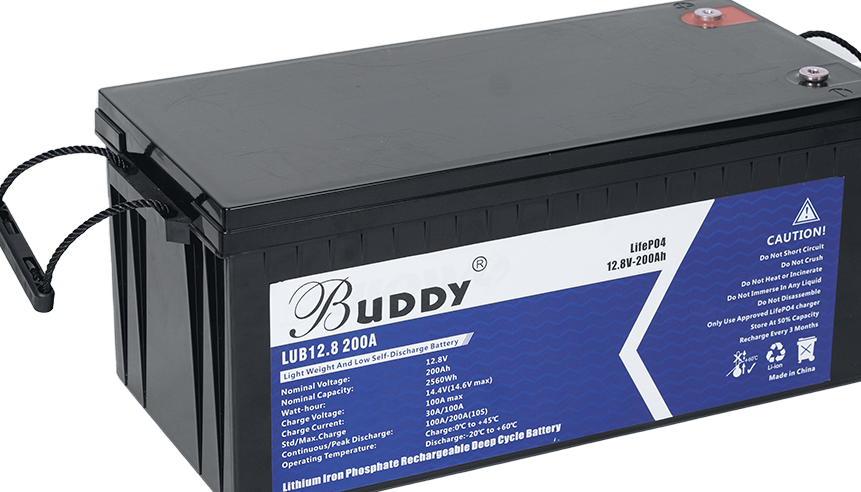The charging process of a 12V lead-acid battery is an important operation involving multiple steps and technical details. The following details how to charge a 12V lead-acid battery to ensure a safe and efficient charging process. First of all, choosing the right charger is crucial. For lead-acid batteries, constant current chargers are a suitable choice. Also, make sure that the charger is specifically designed for 12V batteries to ensure that the charging voltage and current match the battery. Before charging, it is important to ensure that the charging environment is safe. The charging place should be well ventilated and away from flammable materials to prevent overheating of the charger and battery from causing fire or other safety accidents. At the same time, check whether the battery is intact, if there is damage or leakage, should immediately stop charging and replace the battery.
Next, the positive end of the charger (usually a red plug) is connected to the positive end of the battery, and the negative end (usually a black plug) is connected to the negative end of the battery. Make sure the connection is secure and correct to avoid charging failures or safety hazards due to poor contact. Set the appropriate charging current and voltage according to the charger's instructions. This usually needs to be determined according to the capacity and state of the battery. Follow the charger manufacturer's recommendations to ensure safe and optimal charging results. During the charging process, pay close attention to the status and temperature changes of the battery. If the battery temperature is found to be abnormally high or the charger is abnormal, stop charging immediately and check the cause. At the same time, avoid charging for too long to prevent the battery from being damaged by overcharging.
When the battery reaches the full state, the charger usually automatically stops charging. In this case, disconnect the charger from the battery and turn off the power switch. At this point, the charging process of the 12V lead-acid battery is completed. In addition, in order to maintain the best performance of the battery, it is recommended that the battery be deeply discharged and recharged regularly. This helps to activate the active substances in the battery, improving the capacity and service life of the battery. In short, charging a 12V lead-acid battery is a process that requires careful operation. By choosing the right charger, ensuring a safe charging environment, properly connecting the battery and charger, setting the appropriate charging parameters, and paying close attention to the charging process, you can ensure that the battery is charged safely and efficiently.
Charging a 12V lead-acid battery requires specific steps to ensure that the charging process is safe and efficient. The following are the specific steps and guidelines for charging the battery:
a, preparation
& have spent 1. Check the device:
Make sure that the charger used is suitable for 12V lead-acid batteries. Many smart chargers automatically recognize the battery voltage, but for manual chargers, the user must confirm that the battery voltage matches the charger.
Prepare the necessary charging cables and plugs, making sure they are in good condition and have no exposed wires or damaged plugs.
2. Check the battery status:
Before you start charging, check the appearance and condition of the battery. If the battery has significant damage, leakage, or expansion, stop charging immediately and seek professional help.
second, charging steps
& have spent 1. Connect the charger:
Connect the positive terminal of the charger (usually marked with the "+" symbol) to the positive terminal post of the battery. Similarly, connect the negative terminal of the charger (marked with the "-" symbol) to the negative post of the battery. Make sure the connection is secure to prevent it from loosening or falling off during charging.
2. Set and start charging:
According to the type of charger used, set the appropriate charging parameters (such as charging current, voltage, etc.). For most standard chargers, it is simply necessary to start the charging procedure, as they are able to automatically identify and adjust the appropriate parameters. If you are using a smart charger, you can place it in the appropriate mode (such as slow charge or fast charge).
3. Monitor the charging process:
Monitor the status of batteries and chargers to see if there are any abnormal phenomena such as high temperature, gas production, etc. Record the voltage, current and state of the charge regularly.

third, note
& have spent 1. Avoid overcharging and overdischarging:
Lead-acid batteries will be damaged when overcharged or overdischarged. So, use the right charger and follow the manufacturer's guidelines to make sure you don't overcharge or discharge the battery.
2. Temperature control:
Make sure the battery is charged at the right temperature. Excessive temperatures can cause damage to the battery and may lead to safety risks. Avoid charging in a hot environment or use a well-ventilated area to maintain a suitable temperature.
3. Comply with safety rules:
Always follow safety rules and guidelines when doing any battery-related work. For example, do not touch the battery or charger during charging to avoid the risk of electric shock or fire. Always ensure that you work in a dry environment, away from flammable and wet areas.
4. Regular maintenance:
Perform regular battery maintenance and inspection, including cleaning of electrode posts and cable connection points, to ensure good electrical contact. In addition, it is also very important to check the liquid level of the battery regularly and keep it at an appropriate level.
Properly charging a 12V lead-acid battery requires a series of steps and precautions. By following these guidelines, you can ensure the safe and efficient charging of your battery and extend its service life. If you have questions about any of the steps or are unsure how to proceed, consult a professional or get more help.